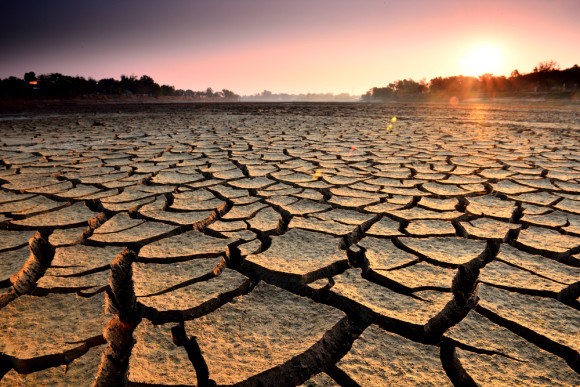Climate experts from Oregon, Washington and Idaho say most of the Northwest remains locked in drought and that the region is unlikely to get enough rainfall to end drought conditions.
Britt Parker, regional drought information coordinator for the National Oceanic and Atmospheric Administration, told the Capital Press that 74% of the Northwest is currently in drought. Approximately 18% of the region is in “extreme” or “exceptional” drought, the two driest categories.
“This reflects long-term precipitation deficits for much of the interior Northwest,” Parker said.
It would take 150% to 200% above normal precipitation over the next two months to end drought conditions in the most severely impacted areas, according to the NOAA. Nick Bond, Washington state climatologist, said the odds of that happening are extremely low.
Climate watchers had hoped that a La Nina weather system, which typically brings cooler and wetter winter weather, would help the region.
But a ridge of high pressure that normally sits over the north-central Pacific Ocean was closer to the West Coast than normal in recent months, deflecting storms and pushing them north, Bond said.
“That basically dried us out for that period of January and February that we’re complaining about,” Bond said.
In the driest areas of southern and central Oregon, irrigators face another year of water shortages and fire districts are predicting above-normal risk for wildfires as early as May.
The forecasts for the region are not encouraging for March through May, Bond said, but the spring weather is expected to be cooler than last year, allowing snow in the mountains to melt more gradually. That means water will replenish streams and rivers longer into the summer.
Oregon state climatologist Larry O’Neill said most reservoirs are averaging between 10% and 30% lower than last year, which could mean problems for farmers and fish.
“We are coming into some tough times here in Oregon,” O’Neill said. “Not only are water supply issues going to become more acute, but we’re starting to grow concerned about the general dryness of the landscape and what it means for wildfire risk.”
In Idaho, Idaho Department of Water Resources hydrologist David Hoekema said southern Idaho is “definitely heading in the direction of drought,” while northern Idaho is doing a bit better. Last year, southern Idaho had the driest spring since 1924, leaving reservoirs much lower than normal.
Despite near normal snowpack, it will take more for reservoirs in the Big Wood Basin to recover after three consecutive years of drought, Hoekema said.
“There’s kind of a memory in the system,” he said. “It takes more than an average year to recover.”
Washington state appears to be in a better position. Karin Bumbaco, assistant state climatologist, said overall snowpack, precipitation and reservoir storage in Washington is faring better than Oregon and southern Idaho.
Water supplies in western Washington will likely be in good shape, except for parts of the Olympic Peninsula and Dungeness Valley, which have had low summer streamflows because of lower snowpack over the last several years.
The U.S. Bureau of Reclamation is predicting senior water rights holders in the Yakima Basin will get their full water allotments and that junior water right holders will get about 96% of their normal water allotments.
But dryland wheat farmers in some areas east of the Cascades could face trouble after recent weeks brought only about a quarter of the normal rainfall levels.
“We anticipate that there could be a possibility of continued impacts to dryland agriculture if we stay dry,” she said.
Was this article valuable?
Here are more articles you may enjoy.



 Litigation Funding, Other New Laws in SE States Could Impact Liability Insurance
Litigation Funding, Other New Laws in SE States Could Impact Liability Insurance  Is the AI Boom a Bubble Waiting to Pop? Here’s What History Says
Is the AI Boom a Bubble Waiting to Pop? Here’s What History Says  ’60 Minutes’ Homeowners Ask Court to Force DFS to Divulge Heritage Probe Info
’60 Minutes’ Homeowners Ask Court to Force DFS to Divulge Heritage Probe Info  Kansas Man Sentenced to Probation for Insurance Fraud
Kansas Man Sentenced to Probation for Insurance Fraud 

